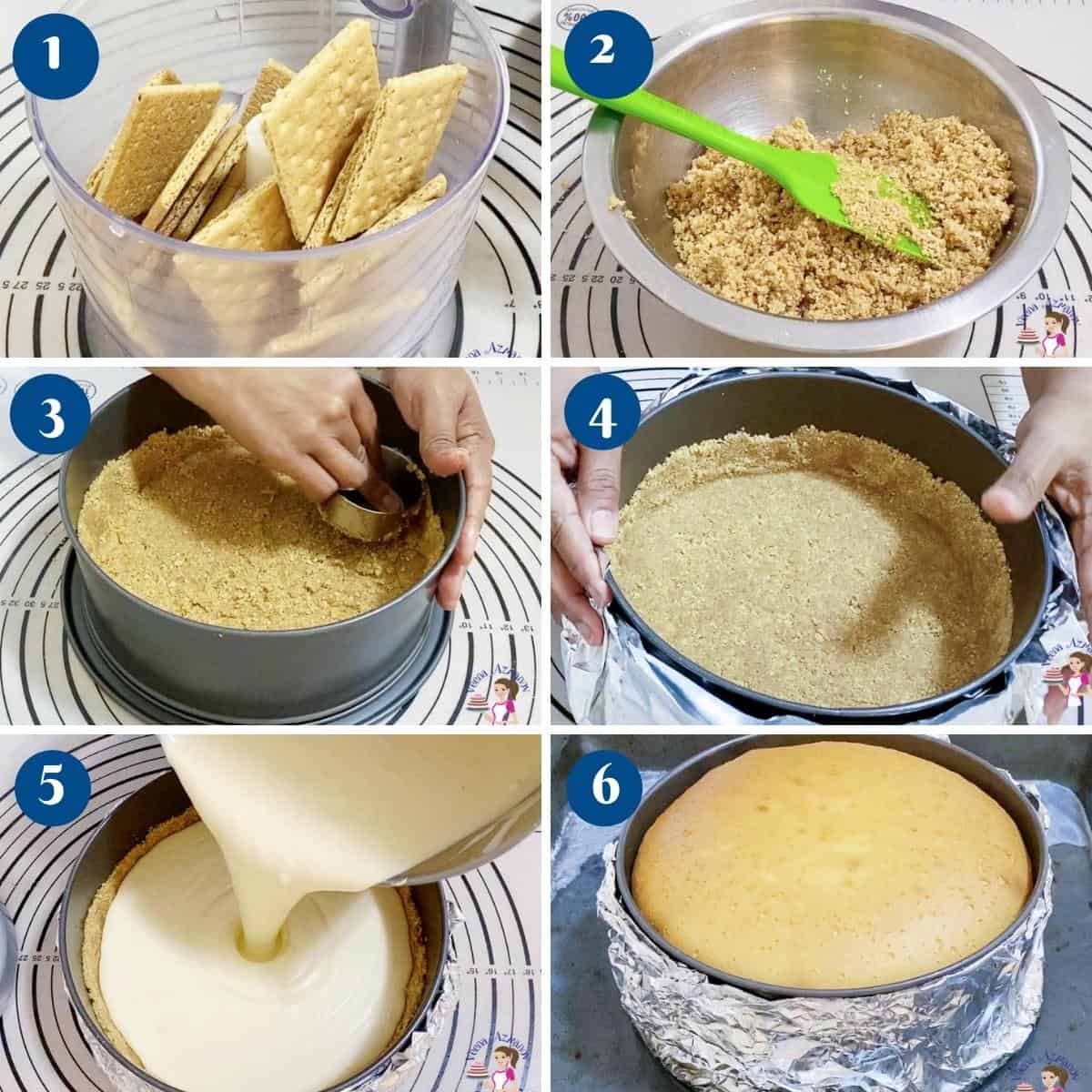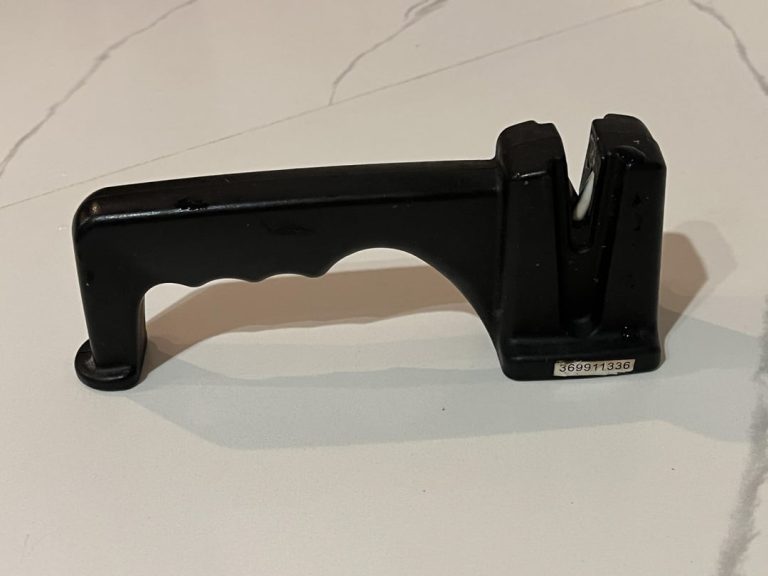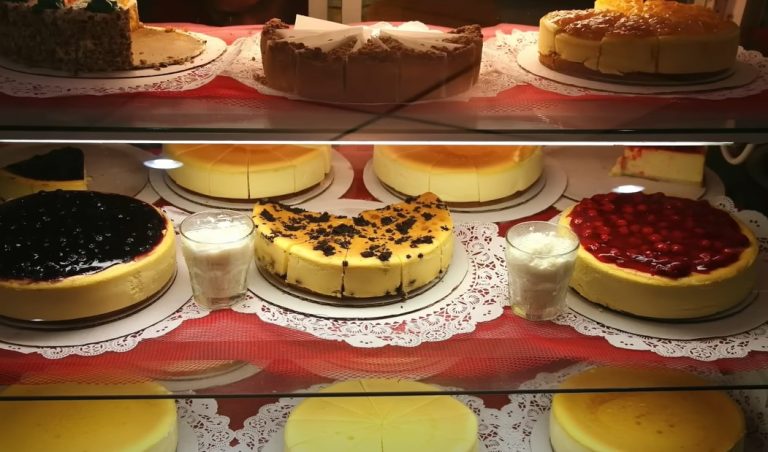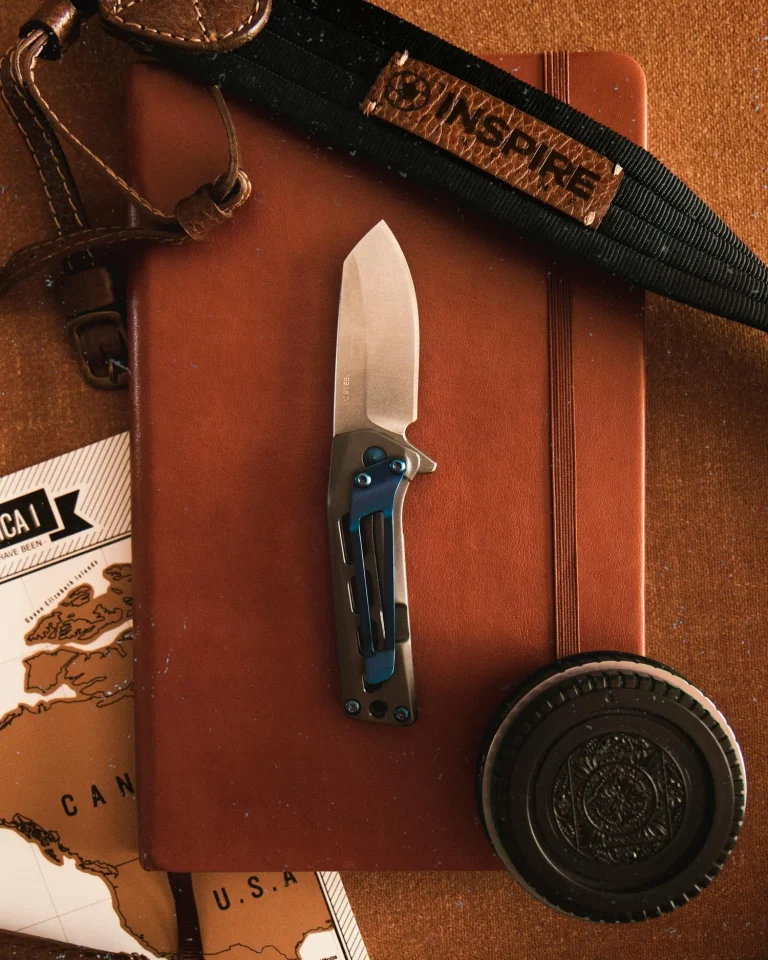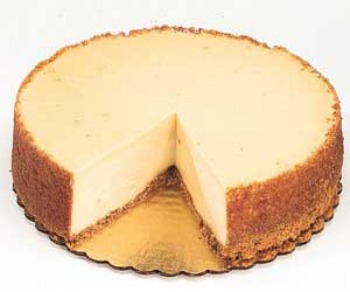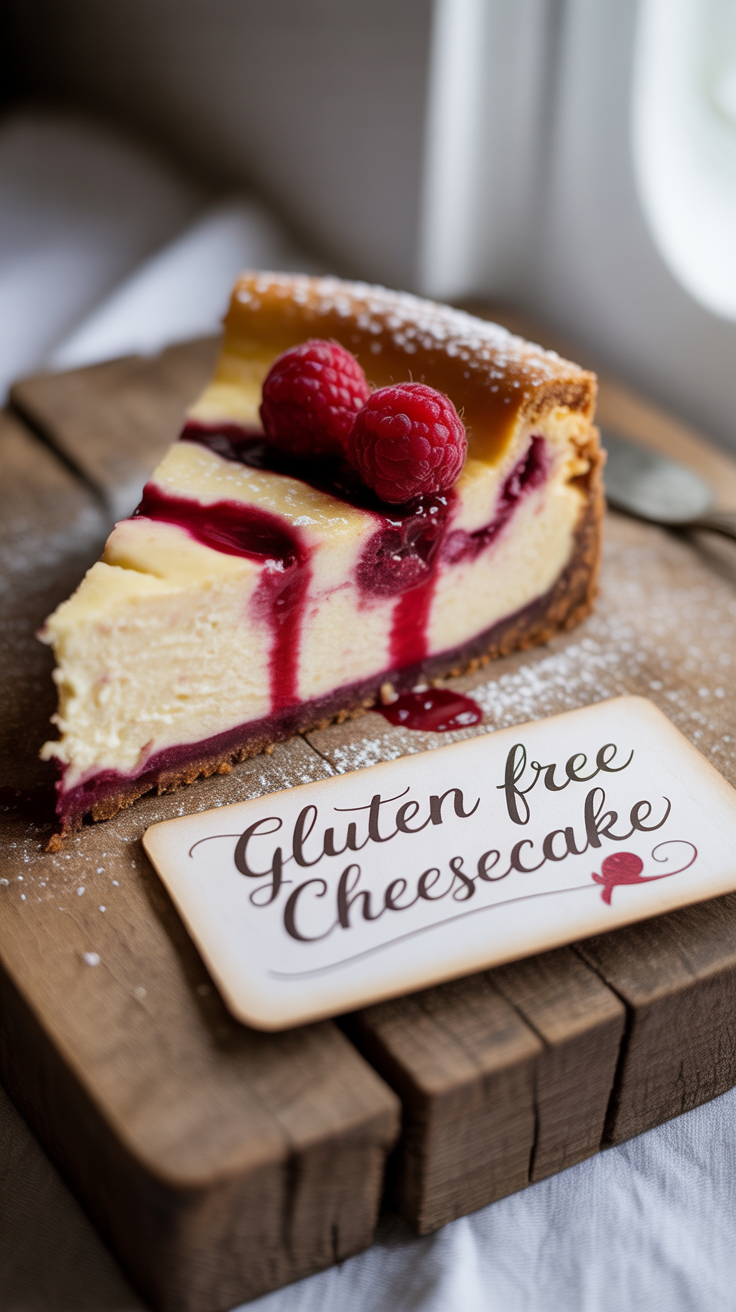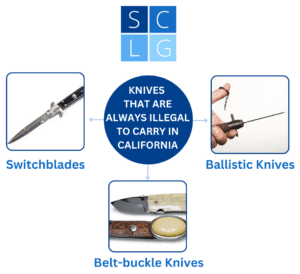How to Make Cheesecake Crust? Easy Step-by-Step Guide
How to make cheesecake crust? To make cheesecake crust, mix 1½ cups crushed graham crackers, 2 tablespoons sugar, and 6 tablespoons melted butter. Press the mixture firmly into the bottom of a springform pan. Bake at 350°F (175°C) for 8–10 minutes or chill for no-bake recipes. Let cool before adding filling.
The crust sets the stage for the entire dessert, and mastering it is easier than you might think. Imagine the satisfaction of creating a homemade cheesecake that rivals any bakery’s best. In this guide, you’ll discover the secrets to making a cheesecake crust that’s not only delicious but also the perfect base for your culinary masterpiece.
Whether you’re a seasoned baker or just starting, this step-by-step approach will empower you to create a crust that’s just right every time. Ready to elevate your cheesecake game? Let’s dive in!
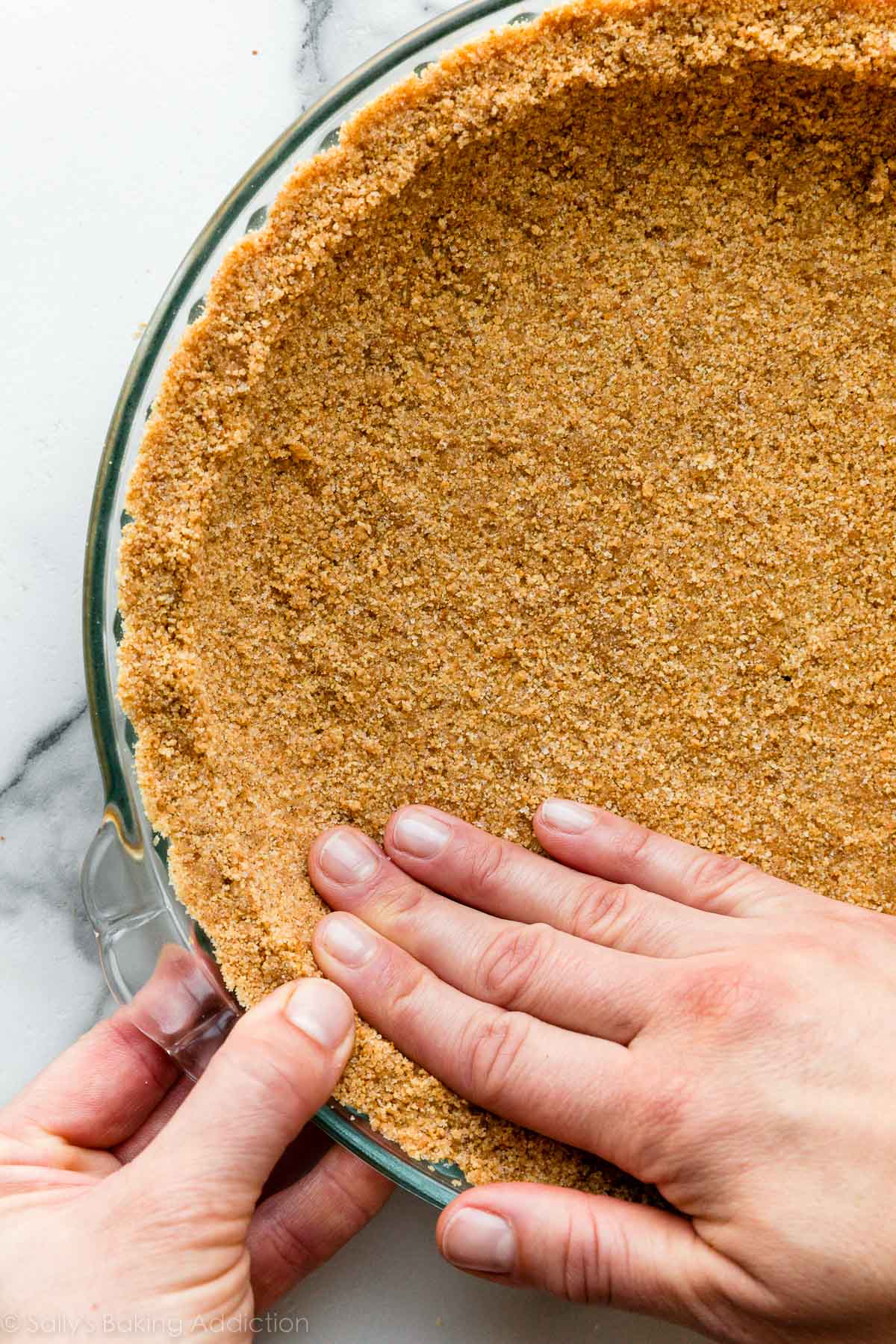
Credit: sallysbakingaddiction.com
How to Make Cheesecake Crust?
Choosing The Right Ingredients
Creating the perfect cheesecake begins with a solid foundation—the crust. Choosing the right ingredients for your cheesecake crust is crucial for enhancing the overall flavor and texture of your dessert. From the type of cookies to the butter, each component plays a vital role in achieving that perfect bite. But how do you decide which ingredients will elevate your cheesecake from good to unforgettable?
Opt For The Right Cookies
The base of any cheesecake crust typically involves crushed cookies. You might think graham crackers are the only option, but there are several alternatives. Consider digestive biscuits for a subtle sweetness or Oreo cookies for a chocolatey twist. Each choice brings a unique flavor profile to your cheesecake.
Have you ever tried using ginger snaps? They add a spicy kick that pairs beautifully with a pumpkin cheesecake. The key is to match the cookie to the flavors of your cheesecake filling.
Choose Quality Butter
Butter is not just a binding agent; it’s a flavor enhancer. High-quality, unsalted butter adds richness and depth to your crust. Its creamy texture helps to bind the crushed cookies into a cohesive base.
Consider using European-style butter for an extra creamy texture. If you’re feeling adventurous, try adding a pinch of sea salt to highlight the sweetness of your cookies.
Consider Adding Sugar
Depending on the cookie you choose, a bit of sugar might be necessary. If your cookies aren’t sweet enough, adding a tablespoon of granulated or brown sugar can balance the flavors.
Brown sugar adds a caramel-like undertone, which can complement cheesecakes with fruit toppings. It’s all about finding the right sweetness level that harmonizes with your filling.
Experiment With Spices
Spices can elevate your cheesecake crust from ordinary to extraordinary. Cinnamon, nutmeg, or even cardamom can add depth and complexity. Be careful not to overpower the main flavors of your cheesecake.
Have you ever tried adding a dash of cinnamon to your crust for a classic vanilla cheesecake? It adds warmth without overshadowing the creamy filling. What spice would you dare to experiment with?
Choosing the right ingredients for your cheesecake crust is a rewarding endeavor. Each decision impacts the final taste, so why not take a moment to explore different options? Discover what combination of flavors makes your taste buds dance and turns your cheesecake into a masterpiece. What will your next cheesecake crust be like?
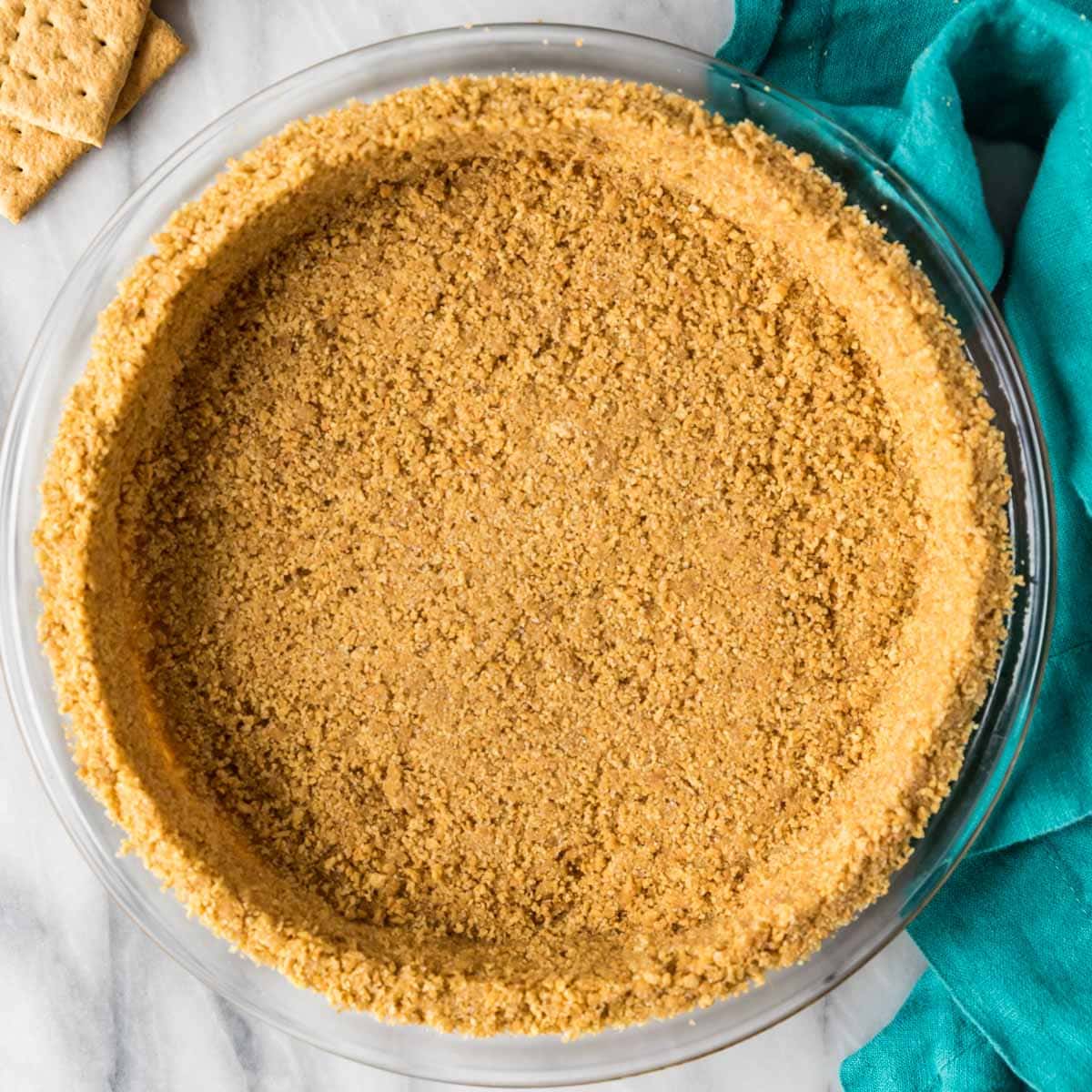
Credit: sugarspunrun.com
Preparing The Equipment
Preparing the right equipment is crucial for making a perfect cheesecake crust. The tools you choose can affect the texture and taste. Good preparation ensures a smooth baking process. Let’s explore the essential equipment needed for a cheesecake crust.
1.
Gathering the Right Tools
A springform pan is essential. It allows easy removal of the cheesecake. Choose a non-stick or greased pan for best results. A food processor or blender helps crush the ingredients. A mixing bowl is needed for combining the crust mixture. Use a spatula or spoon for pressing the crust into the pan.
2.
Ensuring the Equipment is Clean
Clean equipment prevents unwanted flavors. Wash the springform pan with warm, soapy water. Rinse thoroughly to remove any residue. Wipe the food processor or blender blades carefully. Dry all equipment before use to avoid moisture in the crust.
3.
Preparing the Workspace
Clear your workspace to avoid clutter. Place all tools within easy reach. Ensure your countertop is clean and dry. Lay out a clean towel or mat to catch crumbs. This organization speeds up the process and reduces stress.
4.
Measuring Ingredients Precisely
Accurate measurements ensure a balanced crust. Use measuring cups for dry ingredients. A digital scale can provide precision. Measure ingredients before starting the process. This prevents errors and ensures consistency in taste and texture.
Mixing The Crust Ingredients
Creating the perfect cheesecake crust begins with mixing crushed graham crackers, melted butter, and sugar. Ensure the mixture is well-combined for a uniform texture. Press firmly into a pan, forming a solid base for the cheesecake filling.
Creating a cheesecake crust is an essential step in the cheesecake-making process. It sets the foundation for your dessert, providing the perfect crunchy contrast to the creamy filling. Mixing the crust ingredients correctly ensures a delicious base that enhances the overall flavor and texture of your cheesecake. Let’s dive into the specifics of how you can achieve the perfect crust.
1. Gather Your Ingredients
Before you start, make sure you have all the necessary ingredients at hand. You’ll need graham cracker crumbs, melted butter, and a bit of sugar. These three simple ingredients come together to form the classic cheesecake crust.
2. Measure Precisely
Precision matters. Use a measuring cup to get the right amount of each ingredient. For instance, aim for about 1 ½ cups of graham cracker crumbs, ¼ cup of sugar, and ½ cup of melted butter.
3. Combine Ingredients In A Bowl
Place your graham cracker crumbs in a large mixing bowl. Add the sugar, followed by the melted butter. The butter acts as a binding agent, holding the crumbs together.
4. Mix Until Evenly Coated
Use a fork or your hands to mix the ingredients thoroughly. Ensure every crumb is coated with butter. This step is crucial for a uniform crust.
5. Check The Consistency
The mixture should resemble wet sand. If it’s too dry, add a little more melted butter. If too wet, sprinkle in a few more crumbs.
6. Taste For Sweetness
Give the mixture a quick taste. Adjust the sugar if necessary, especially if you prefer a sweeter crust. It’s easier to tweak it now than after it’s baked.
7. Get Creative With Flavors
Consider adding a pinch of cinnamon or vanilla extract. These small additions can elevate your crust’s flavor profile. Experiment with these tweaks to suit your taste.
8. Reflect On Personal Experience
The first time I made a cheesecake, I underestimated the importance of the crust. It crumbled apart because I rushed the mixing process. Don’t repeat my mistake; take your time and ensure everything is blended well.
How do you know when the crust is just right? It’s all about the balance between crumbly and cohesive. Have you ever experimented with different crust flavors? Share your experiences in the comments!
Pressing The Crust Into The Pan
Gently press the crumb mixture evenly across the bottom and up the sides of the pan. Use your fingers or a flat tool. Ensure a firm and compact crust to hold the cheesecake filling.
Pressing the cheesecake crust into the pan might seem like a straightforward task, yet it holds the key to achieving that delightful first bite. The pressure applied can determine the crust’s texture, ensuring it remains intact when sliced. Whether you’re a seasoned baker or a novice, mastering this step can elevate your cheesecake from ordinary to extraordinary.
Here’s how you can do it effectively:
Understanding The Role Of Pressure
Pressing the crust is not just about flattening; it’s about ensuring a uniform layer. This helps in even baking and prevents the crust from crumbling. Imagine serving a slice only to have the base fall apart—disappointing, right?
Use your fingers or the bottom of a glass to apply consistent pressure. This method guarantees a solid foundation for your creamy filling.
Choosing The Right Tool
What should you use to press the crust into the pan? While fingers offer control, a flat-bottomed object like a glass or measuring cup provides even pressure.
Try different tools and see which fits your style. Some might prefer the tactile feel of fingertips, while others enjoy the precision of a tool.
Testing Your Technique
After pressing, test the firmness by gently tapping the crust. Does it feel solid? If not, apply a bit more pressure. You don’t want any loose crumbs.
Consider the texture—smooth and compact means you’re on the right track. This step is crucial for a perfect cheesecake base.
Learning From Mistakes
Don’t worry if your first attempt isn’t perfect. Every mistake is a learning curve. Did you press too hard and the crust broke? Try a lighter touch next time.
Remember, every cheesecake you make improves your skill. Reflect on each attempt and adjust your technique accordingly.
Seeking Feedback
Once you’ve mastered pressing the crust, share your cheesecake with friends or family. Ask them how the crust holds. Is it too crumbly or just right?
Feedback is invaluable. It helps refine your technique, ensuring that each cheesecake you make is better than the last.
By focusing on pressing the crust effectively, you lay the groundwork for a cheesecake that everyone will love. What other tips have you found helpful in achieving a perfect crust?
Baking And Cooling Tips
Creating the perfect cheesecake crust requires finely crushed graham crackers mixed with melted butter and sugar. Press the mixture evenly into the pan, ensuring a firm base. Allow the crust to cool before adding the cheesecake filling for best results.
Crafting the perfect cheesecake crust might seem daunting, but with a few baking and cooling tips, you can achieve that ideal crispness and flavor balance. A well-baked crust lays the foundation for the entire dessert, so it’s crucial to get it right. Let’s dive into some easy yet effective strategies to elevate your cheesecake crust to professional levels.
Bake For The Right Amount Of Time
Timing is everything when baking your cheesecake crust. Bake the crust until it turns a light golden brown. This usually takes about 10-12 minutes at 350°F (175°C). A slightly underbaked crust may result in a soggy base, while overbaking could lead to a bitter taste. Always keep an eye on the color rather than relying solely on the timer.
Avoid Cracks With Gradual Cooling
Cracks in a cheesecake crust can be frustrating. One way to prevent this is by allowing your crust to cool gradually. After baking, turn off the oven and let the crust rest inside for a few minutes with the door ajar. This slow cooling process helps maintain the crust’s structure and prevents sudden temperature changes that can lead to cracks.
Consider Blind Baking
Blind baking involves pre-baking the crust without the cheesecake filling. This technique helps ensure a crisp texture. To do this, press your crust into the pan, then bake it before adding the filling. This step can be particularly beneficial if you’re using a moist filling, as it creates a barrier that prevents sogginess.
Use A Water Bath
A water bath can be your crust’s best friend. Place your cheesecake pan in a larger baking dish filled with a bit of hot water. This method helps distribute heat evenly, preventing the edges from cooking faster than the center. It also adds moisture to the oven, reducing the risk of the crust drying out.
Let It Cool Completely Before Removing
Patience pays off when it comes to cooling your cheesecake crust. Allow the crust to cool completely in the pan before attempting to remove it. This ensures it sets properly and reduces the risk of crumbling. If you’re in a hurry, it might be tempting to rush this step, but giving it time to cool can make all the difference in texture and appearance.
Are there any other tips you’ve found helpful for baking and cooling a cheesecake crust? Share your experiences and let’s perfect our cheesecake skills together!
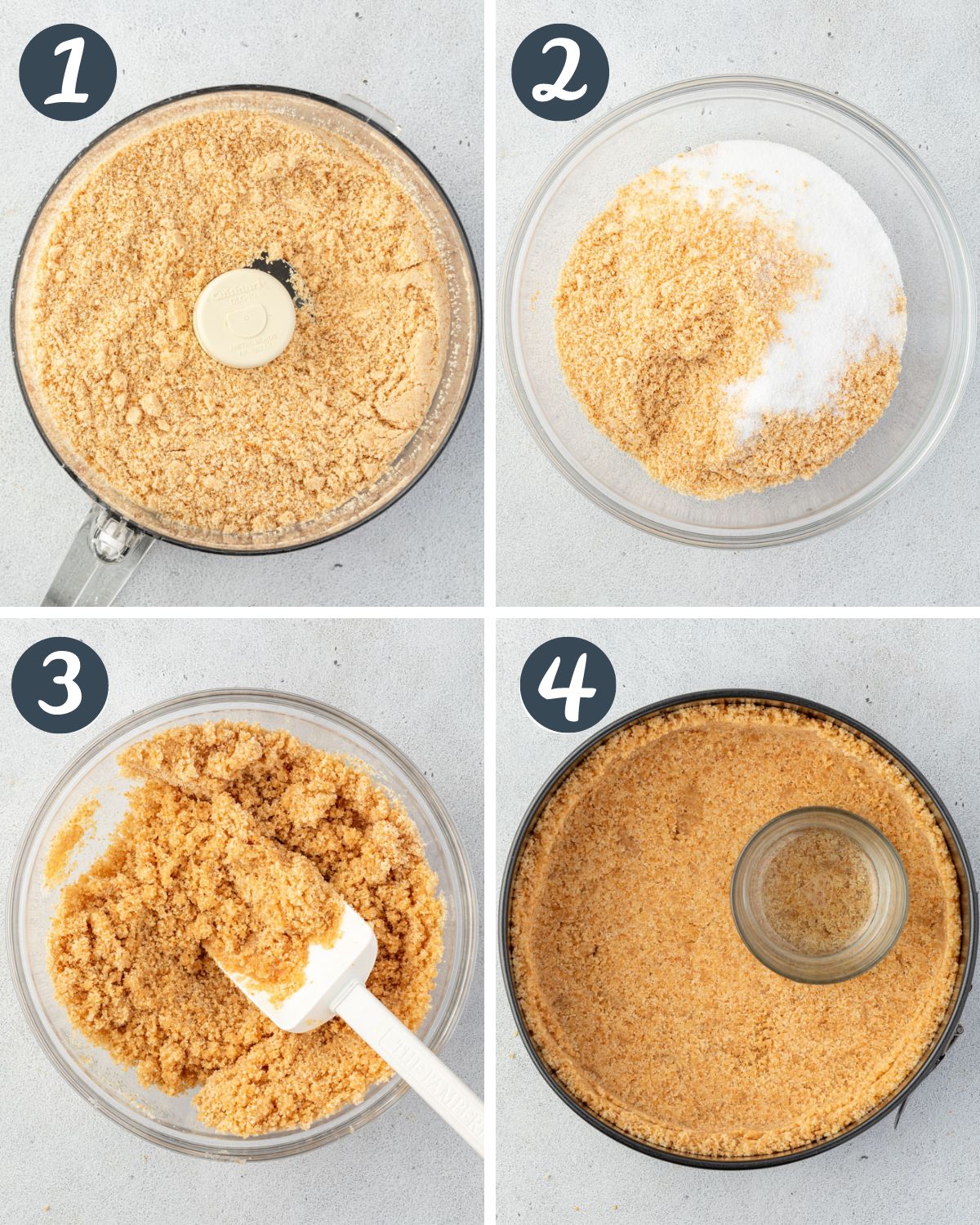
Credit: stateofdinner.com
Frequently Asked Questions
What Ingredients Are Needed For Cheesecake Crust?
To make a cheesecake crust, use graham crackers, sugar, and melted butter. Mix well and press into pan.
How Do I Prevent Crust From Crumbling?
Ensure crust sticks by pressing firmly into pan. Chill for 30 minutes before adding filling. Helps hold shape.
Can I Use Cookies For Cheesecake Crust?
Yes, cookies work well. Crush them, mix with butter, and press into pan. Adds unique flavor and texture.
Conclusion
Creating the perfect cheesecake crust is simple with practice. Start with fresh ingredients for the best flavor. Follow the steps carefully, and soon you’ll have a delicious base. Remember, patience is key. The crust sets the stage for your cheesecake masterpiece.
Explore different crust types to find your favorite. Share your creation with family and friends. They will love your homemade cheesecake. Experiment with flavors and textures. Enjoy the process and have fun baking. Your tasty cheesecake awaits! Keep baking and learning.
Each cake is a new adventure.
Related Recipes

